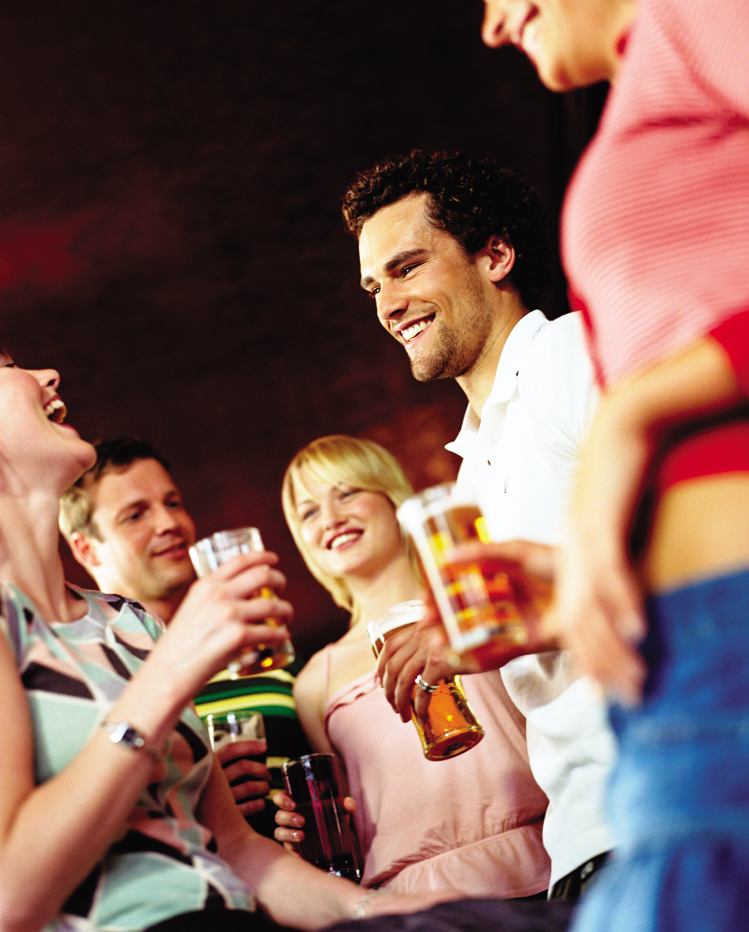The Use and Abuse of Alcohol
In college, many students will encounter alcohol or other legal and illegal substances. Of course, there are legal age restrictions to consuming alcohol; to avoid potential legal consequences, you should not drink alcohol if you are under age twenty-one. If you decide to consume risky substances, you can still make responsible decisions about your consumption by using the harm-reduction approach. Continue reading to learn some simple harm-reduction approaches to consuming alcohol.

- Slow down drinking. One way to maintain a “buzz”—the euphoric sensation you experience from drinking—is by drinking one beer per hour or less. Pacing yourself and limiting your drinks help prevent you from attaining a high blood alcohol content (BAC) level. (You will learn more about BAC levels later in this section).
- Eat while you drink. Sometimes eating while you consume alcohol helps slow down your drinking and slows down the processing of alcohol. Body weight and gender play a large role in this as well.
- Drink water. Alcohol dehydrates your body, so it is important to drink plenty of water while consuming alcohol.
- Designate a driver before you go out. Walking is always a better option than driving a vehicle, but if you are going to take a vehicle to a destination with alcohol, you should always designate the sober driver before you leave.
Because 50 percent of college students reported helping a drunken friend, classmate, or study partner in the previous year, it’s important that all students learn about the effects of alcohol consumption. Alcohol can turn even people who don’t drink into victims, such as people who are killed by drunk drivers or family members who suffer as a result of the destructive behavior of an alcoholic relative. Over the course of one year, about 20 to 30 percent of students report serious problems related to excessive alcohol use. You might have heard news reports about college students who died or were seriously or permanently injured as a result of excessive drinking. Just one occasion of heavy or high-risk drinking can lead to problems.
People experience the pleasurable effects of alcoholic beverages as the alcohol begins to affect several areas in the brain. How fast you drink makes a difference, too. Your body gets rid of alcohol at a rate of about one drink—defined as one 12 ounce beer, one 5 ounce glass of wine, or 1.5 ounces of hard liquor—per hour. Drinking more than one drink an hour may cause a rise in BAC because the body is absorbing alcohol faster than it can eliminate it. We should also note here that popular home remedies for sobering up, like drinking coffee or water or taking a cold shower, don’t work.
At BAC levels of .025 to .05, a drinker may feel animated and energized. At a BAC level of around .05, a drinker may feel rowdy or boisterous. This is where most people report feeling a buzz from alcohol. At a BAC level between .05 and .08, alcohol starts to act as a depressant, so as soon as you feel that buzz, remember that you are on the brink of losing coordination, clear thinking, and judgment.
Driving is measurably impaired even at BAC levels lower than the legal limit of .08. In fact, an accurate safe level for most people may be half the legal limit, or .04. As BAC levels climb past .08, people become progressively less coordinated and less able to make good decisions. Most people become severely uncoordinated at BAC levels higher than .08 and may begin falling asleep, falling down, or slurring their speech.
Most people pass out or fall asleep when their BAC level is above .25. Unfortunately, even after you pass out and stop drinking, your BAC level can continue to rise as alcohol in your stomach is released to the intestine and absorbed into the bloodstream. Your body may try to get rid of alcohol by vomiting, but you can choke on your vomit if you are unconscious, semiconscious, or severely uncoordinated. Worse yet, at BAC levels higher than .30, most people will show signs of severe alcohol poisoning, such as an inability to wake up, slowed breathing, a fast but weak pulse, cool or damp skin, and pale or bluish skin. Anyone exhibiting these symptoms needs medical assistance immediately.